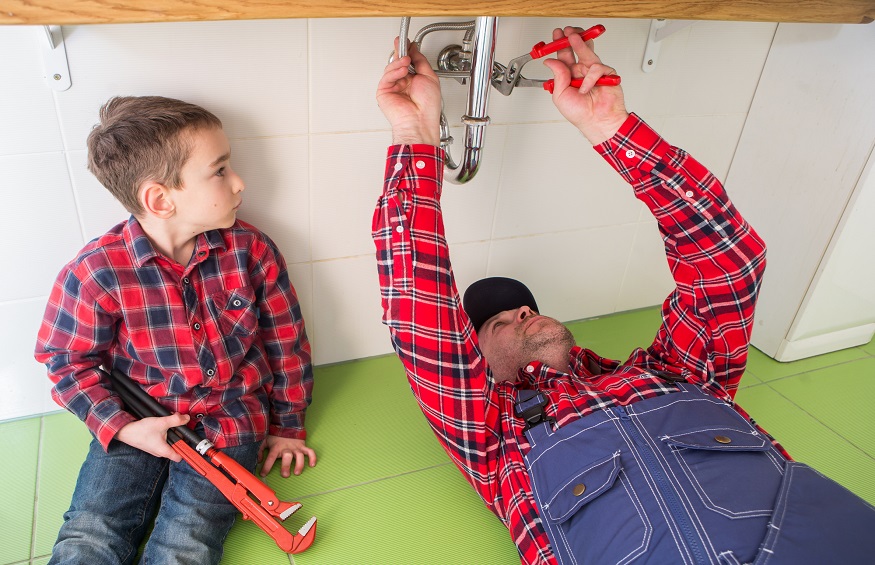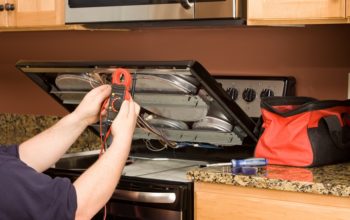A leak in the U pipe under your sink can sometimes have an easy fix. Other times, there’s more to a leaking problem than you can anticipate. Finding the source isn’t always easy and addressing the problem can take some handy work.
For millions of homeowners, leakage problems are somewhat common. In fact, 10 percent of homes leak more than 90 gallons of water per day. The average household can also waste 10,000 gallons of water every year.
If you’re wondering, “why is my U pipe under the sink leaking?” here’s what you should know about how to find the problem and fix it.
Should I Worry About a U Pipe Leak?
It may be difficult to spot a U pipe leak in the first place. After all, they’re typically located underneath sinks or in spaces that aren’t easily accessible. However, you can usually detect a leak in your U pipe by the odor that results from a faulty pipe.
You can also call a professional to locate and fix the pipe leak for you. On average, it costs under $300 to professionally replace a U pipe.
So if you’re worried about the cost of replacement, a leaking U pipe isn’t as expensive as some other major plumbing projects.
However, if you need other plumbing fixers for your pipe system, that can cost anywhere upwards of $500 to replace.
How Does a U Pipe Work?
Before you attempt to fix a U pipe, it’s important to know what it does and how it works. First of all, the U pipe is designed to keep sewage gases from permeating your home through the pipes.
The lack of constant water flow can cause pipes to dry and the waste inside them to rot. The decomposition then creates that infamous sewage smell. All of your plumbing appliances such as sinks, showers, and toilets have a U pipe to regulate this process.
The U pipe is also called a “P-trap” because gravity traps the sewer odors inside the pipe’s curve. Gravity secures a remaining amount of water inside the U part of the pipe after the rest is sent down the drain. Then, the liquid blocks the sewer gas from spreading throughout the pipe.
Other Names for U Pipes
Since U pipes are installed in various plumbing appliances, they can have different names and shapes. Other U pipe variations can also come from older models.
The S-Trap is one older variation of the U pipe. Some older homes may have S-traps, however, they’re not designed to standard codes of plumbing fixtures. U-traps are the more common standard pipe fixture and they’re both called a P-trap or a J-trap.
Why Is My U Pipe Under the Sink Leaking?
To fix the leak in your U pipe, you should start by locating the origin. If the leak is easily accessible and visible, it’s likely that one of the compression nuts on the U pipe is loose.
You can simply hand-tighten the compression nuts, if this is the case. After hand-tightening, use pliers to secure it even tighter.
Before you do any assembling, be sure to turn off the shutoff valve to prevent any water flow while you’re working.
Troubleshooting
The most common causes of leaky U pipes include loose or cracked compression nuts. This looseness indicates that the flow of water is disrupted and partially escapes somewhere along the pipe.
Depending on how loose the joints, it could also indicate that the entire U pipe is misaligned with the rest of the plumbing system.
Sometimes there is a larger issue beyond a loose compression nut and you have to further investigate the site.
If the leak persists even after you’ve tightened the nuts, it’s possible that you need to install a new ring nut or replace the pipe entirely.
To replace the nut, loosen it with pliers and separate it from the pipe by hand.
If your pipe fittings are plastic, use caution with metal pliers or wrenches. Squeezing the pipe fixers can too hard and damage them.
Once loose, take the nut and the washer off the pipe. Lastly, assemble the new nut and washer onto the pipe. You may have to shimmy the fittings onto the pipe, but just make sure they fit snuggly. Then, hand-tighten them until you need to use tools to tighten them further.
Related U Pipe Issues
If loose joints aren’t the culprit, then you likely need to replace the entire U pipe.
The most common materials used for pipes are either copper or plastics polyvinyl chloride (PVC). Some pipes may also use other metals such as iron or steel. If your pipes are made of metal, you may have regular breakage issues.
Metal pipes freeze easily which can cause serious damage to them. When the water inside of the pipes freezes, it expands and causes the pipes to burst.
Freezing is even more likely to occur without constantly running water. Any residual water that sits in your pipes can freeze, expand, and then cause a leaky pipe.
Sometimes you can take preventative measures before your pipes freeze and wrap them in heat to keep them thawed.
Metal pipes are also susceptible to corrosion, which can stress older compression nuts and make them ineffective.
While metal pipes are prone to breakage and corrosion, plastic pipes can have a weaker grip on compression nuts and washers. This means that their fittings are more likely to come loose than metal fittings.
How to Stop My U Pipe Under the Sink Leaking
Water waste can take a toll on your home. Your ceilings, floors, and walls can all sustain damage from a single leak. Not only does leakage affect your home, but it can also increase your water bills.
When you have pipe leakage, it’s best to act quickly to find the root of the problem so you can prevent any further complications. You can also call a professional to fix your U pipe under the sink leaking.
For more tips on your home projects, check out some more ideas in the home improvement section.




